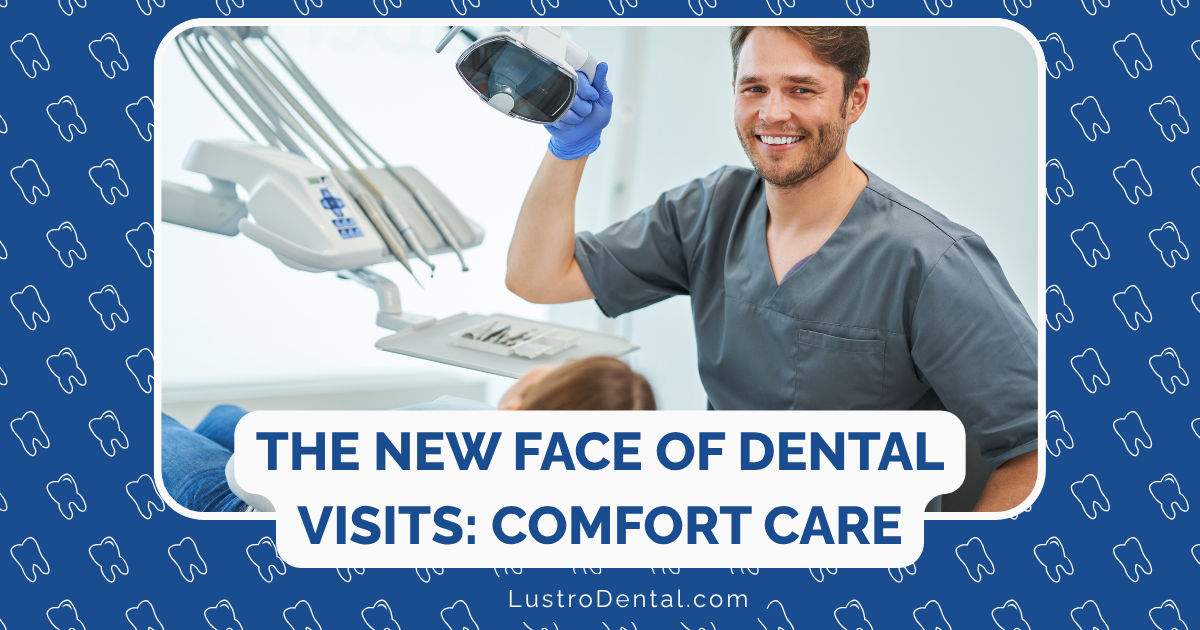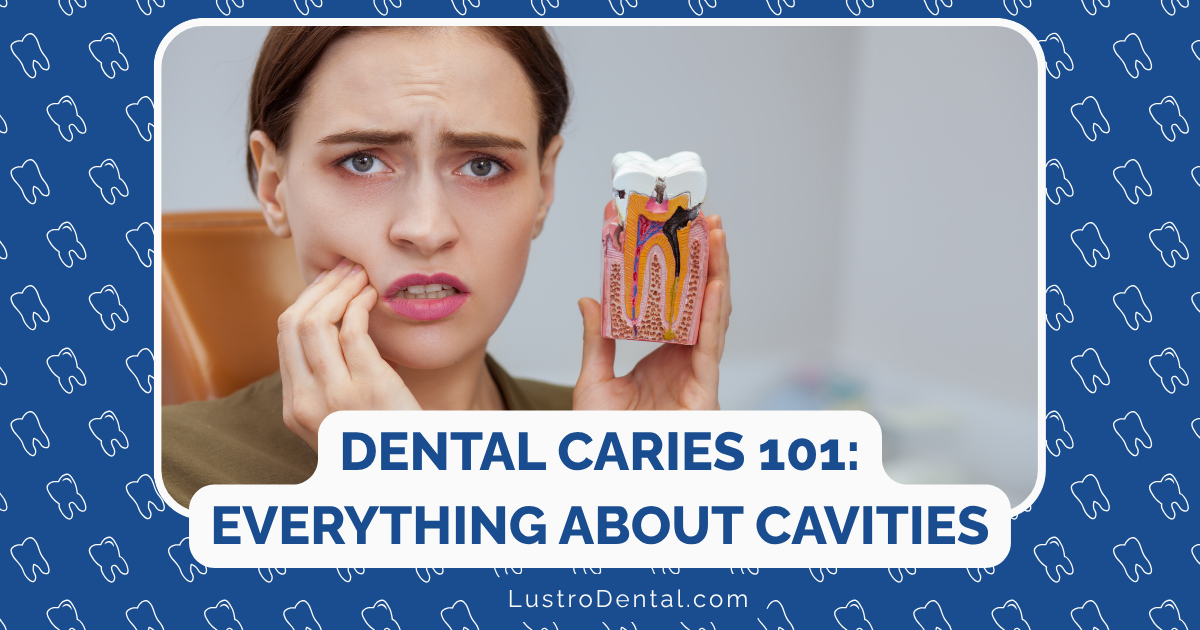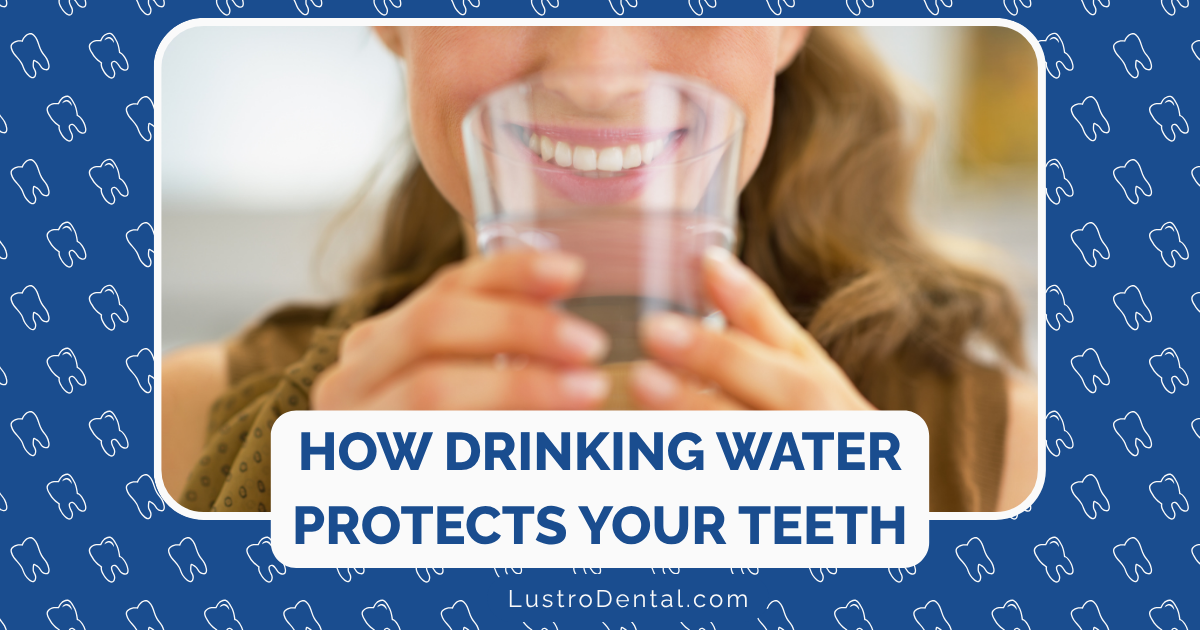Dental Anxiety? How Modern Check-ups Are Becoming More Comfortable

If the thought of sitting in a dental chair makes your heart race and your palms sweat, you’re not alone. Dental anxiety affects an estimated 36% of the population, with about 12% experiencing extreme fear that leads to avoiding dental care altogether. This avoidance often creates a vicious cycle: skipped check-ups lead to worsening oral health, which eventually requires more invasive (and potentially more anxiety-inducing) treatments.
The good news? Modern dentistry has evolved dramatically to address these concerns. Today’s dental practices are implementing innovative approaches specifically designed to reduce anxiety and create more comfortable experiences for patients. From technological advances to environmental design, these changes are transforming dental visits into significantly more pleasant experiences.
Let’s explore how modern dentistry is making check-ups more comfortable for even the most anxious patients.
The Evolution of the Dental Environment
From Clinical to Comforting
Remember the stark, clinical dental offices of the past? The harsh lighting, antiseptic smell, and intimidating equipment on display? Modern dental practices have undergone a complete transformation in their approach to office design.
“The environment sets the tone for the entire patient experience,” explains Dr. Sarah Chen, a dentist who specializes in treating anxious patients. “We’ve reimagined dental offices as welcoming spaces that feel more like spas than medical facilities.”
Today’s dental practices often feature:
- Soothing color palettes: Soft blues, greens, and neutrals have replaced stark whites
- Comfortable furnishings: Plush waiting room seating and ergonomic dental chairs
- Natural elements: Plants, natural materials, and even water features
- Thoughtful lighting: Warm, adjustable lighting instead of harsh fluorescents
- Pleasant scents: Subtle aromatherapy to mask clinical odors
- Sound management: Acoustic treatments to reduce drill noise and relaxing music or nature sounds
Research published in the Journal of Dental Research found that environmental design elements can reduce perceived stress by up to 30% during dental visits. Something as simple as having a window with a natural view can significantly lower anxiety levels during treatment.
Sensory Considerations
Modern dental practices are increasingly attentive to sensory experiences that can trigger anxiety.
“We now understand that dental anxiety often has specific sensory triggers,” notes dental hygienist Jennifer Marsh. “By addressing these triggers directly, we can create a more comfortable experience tailored to each patient’s needs.”
Sensory-conscious practices now offer:
- Weighted blankets: Providing deep pressure therapy to reduce anxiety
- Noise-canceling headphones: Blocking out drilling and suction sounds
- Virtual reality headsets: Creating immersive distractions during treatment
- Aromatherapy options: Using calming scents like lavender or chamomile
- Temperature control: Offering warm blankets and adjustable chair heating
A 2023 study in the Journal of Dental Anxiety found that practices implementing three or more sensory accommodation options saw a 45% reduction in reported anxiety levels among patients with moderate to severe dental fear.
Technological Innovations Reducing Discomfort
Pain-Free Anesthesia Delivery
One of the most common anxiety triggers is fear of pain, particularly from injections. Modern dentistry has developed several innovations to make the numbing process virtually painless:
- Computer-controlled anesthesia delivery: Systems like The Wand® deliver anesthesia at a precisely controlled rate, eliminating the pressure discomfort of traditional syringes
- Buffered anesthetics: Neutralizing the acidity of anesthetic solutions makes injections more comfortable and takes effect faster
- Topical numbing gel improvements: More effective formulations that work deeper and faster
- Needle-free options: Jet injection systems that use pressure instead of needles for some procedures
- Warming technology: Bringing anesthetic to body temperature reduces injection discomfort
“The anxiety around ‘the shot’ has been one of dentistry’s biggest challenges,” explains Dr. Michael Rodriguez, DDS. “These new delivery systems are game-changers. Many patients don’t even realize they’ve received an injection.”
Minimally Invasive Techniques
Modern dentistry emphasizes preserving natural tooth structure with less drilling and cutting:
- Air abrasion: Using fine particles to remove minimal amounts of tooth structure
- Laser dentistry: Precisely treating teeth and gums without the vibration and noise of drills
- Chemical caries removal: Using gels that selectively soften decay while preserving healthy tooth structure
- Early intervention technologies: Detecting and treating decay before it requires significant drilling
“With these minimally invasive approaches, many procedures that once required anesthesia can now be performed comfortably without it,” notes Dr. Lisa Warren, a prosthodontist. “Patients are amazed when we complete fillings with no drilling and no shot.”
Advanced Imaging With Less Discomfort
Remember those uncomfortable bitewing X-rays with sharp edges digging into your mouth? Modern imaging has evolved significantly:
- Digital X-rays: Faster, with up to 90% less radiation than traditional film
- Extraoral bitewings: Taken from outside the mouth, eliminating the discomfort of traditional bitewings
- 3D cone beam CT: Providing comprehensive images without uncomfortable intraoral sensors
- Intraoral scanners: Creating digital impressions without the gagging associated with traditional impression materials
“Digital imaging not only improves diagnostic capabilities but dramatically enhances patient comfort,” says Dr. Rodriguez. “No more gagging on impression material or dealing with uncomfortable film holders.”
Virtual Reality: A Game-Changer for Dental Anxiety
One of the most exciting innovations in dental anxiety management is the integration of virtual reality (VR) technology. This immersive distraction tool is showing remarkable results in clinical studies.
The Science Behind VR for Dental Anxiety
Virtual reality works by engaging multiple sensory systems simultaneously, effectively “flooding” the brain with alternative input that competes with pain and anxiety signals.
A 2024 systematic review published in Frontiers in Medicine analyzed 1,522 patients and found that VR distraction significantly reduced pain perception by up to 42% and anxiety by 75% during dental procedures.
“VR creates what we call ‘cognitive distraction’ – essentially giving the brain something else to focus on besides the dental procedure,” explains Dr. Chen. “It’s particularly effective because it’s immersive, engaging both visual and auditory senses simultaneously.”
How VR Is Used in Modern Dental Practices
Today’s dental offices are implementing VR in several ways:
- Procedure distraction: Patients wear VR headsets during treatment, immersing themselves in calming environments or engaging games
- Pre-appointment exposure therapy: Allowing anxious patients to virtually experience a dental visit before their actual appointment
- Educational visualization: Showing patients 3D models of their treatment plan in an immersive format
- Post-procedure relaxation: Helping patients recover from longer procedures with guided relaxation experiences
“What’s fascinating is that VR seems to work well across age groups,” notes dental hygienist Marsh. “We’ve seen remarkable results with both children and adults, though the content needs to be age-appropriate.”
Pharmacological Advances: More Options, Greater Comfort
For patients with more severe anxiety, modern dentistry offers improved pharmacological approaches that are safer and more comfortable than ever before.
Refined Sedation Options
- Nitrous oxide improvements: Better delivery systems with faster onset and recovery
- Oral conscious sedation: Medications specifically designed for dental anxiety with fewer side effects
- IV sedation advancements: More precise control of sedation levels with medications that leave minimal “hangover” effect
- Computer-controlled drug delivery: Systems that maintain optimal sedation levels throughout procedures
“Modern sedation dentistry is about finding the minimum effective dose to ensure comfort while maintaining safety,” explains Dr. Warren. “We can now tailor the approach to each patient’s anxiety level and the complexity of the procedure.”
The Human Touch: Psychological Approaches
While technology has dramatically improved dental comfort, the human element remains crucial in managing dental anxiety.
Communication and Control
Modern dental practices are implementing psychological approaches proven to reduce anxiety:
- Tell-show-do technique: Explaining procedures before performing them
- Stop signals: Giving patients a way to pause treatment if they need a break
- Treatment previews: Walking patients through what to expect with videos or demonstrations
- Appointment control: Offering shorter appointments or morning slots when anxiety tends to be lower
- Systematic desensitization: Gradually introducing more complex procedures as comfort increases
“One of the most effective anxiety-reducing techniques costs nothing: giving patients a sense of control,” notes Dr. Rodriguez. “Simply knowing they can raise a hand to take a break makes many patients feel significantly more comfortable.”
Specialized Training for Dental Teams
Many modern dental practices now invest in specialized training for their entire team:
- Anxiety management certification: Specific training in recognizing and addressing dental anxiety
- Trauma-informed care: Understanding how past experiences affect dental anxiety
- Communication techniques: Using language that reduces fear and builds trust
- Emotional intelligence training: Recognizing subtle signs of discomfort and responding appropriately
“Every team member, from the receptionist to the dental assistant, plays a role in making anxious patients feel comfortable,” emphasizes Dr. Chen. “We train our entire team to recognize anxiety cues and respond with empathy.”
Teledentistry: Easing Into Dental Care
For those with severe dental anxiety, even walking into a dental office can be overwhelming. Teledentistry offers a gentle introduction to dental care.
Virtual Consultations
Modern dental practices increasingly offer:
- Video consultations: Speaking with the dentist from the comfort of home
- Photo-based assessments: Preliminary evaluations without an in-person visit
- Virtual office tours: Familiarizing patients with the environment before arriving
- Pre-appointment relationship building: Getting comfortable with the dental team virtually
“Teledentistry allows anxious patients to establish trust before they ever set foot in our office,” says Dr. Warren. “That initial relationship building can make all the difference for someone who’s been avoiding dental care due to fear.”
The Future of Comfortable Dentistry
Looking ahead to 2025 and beyond, several emerging technologies promise to make dental visits even more comfortable:
- AI-guided anesthesia: Using artificial intelligence to determine optimal anesthesia delivery for each patient
- Augmented reality procedural guidance: Improving precision and reducing procedure time
- Robotically-assisted procedures: Enhancing stability and reducing invasiveness
- Personalized anxiety prediction: Using data to anticipate and address individual anxiety triggers
- Haptic feedback systems: Allowing dentists to “feel” digital models, improving treatment planning
“The future of dentistry is focused on personalization,” predicts Dr. Rodriguez. “We’re moving toward truly individualized approaches to comfort that consider each patient’s unique anxiety profile.”
Taking the First Step: Overcoming Dental Anxiety
If dental anxiety has kept you from regular check-ups, consider these approaches to easing back into dental care:
- Be upfront about your fears: Modern dental practices want to know about your anxiety so they can address it
- Start with a consultation only: Many dentists offer no-treatment first visits for anxious patients
- Ask about comfort options: Inquire specifically about the anxiety-reducing techniques mentioned in this article
- Bring support: Many practices welcome a friend or family member for moral support
- Consider pharmacological help: For severe anxiety, discuss medication options to make the first visit easier
“The most important thing to remember is that you’re not alone,” reassures dental hygienist Marsh. “Dental anxiety is incredibly common, and modern dental practices are better equipped than ever to help you have a comfortable experience.”
Conclusion: A New Era of Dental Comfort
The days of white-knuckle dental visits are becoming a thing of the past. Through thoughtful environmental design, technological innovations, and psychological approaches, modern dentistry is creating experiences that are dramatically more comfortable than what previous generations endured.
Whether your anxiety stems from fear of pain, loss of control, or past negative experiences, today’s dental practices have solutions designed specifically to address your concerns. By taking advantage of these modern approaches, you can maintain optimal oral health without the stress and discomfort that may have kept you away in the past.
“The best part of modern dentistry isn’t just that we can provide more comfortable care,” concludes Dr. Chen. “It’s that patients who previously avoided dental visits are now getting the regular preventive care they need, avoiding more serious problems down the road. That’s the real victory.”
Disclaimer: This article contains general information about dental care and is not a substitute for professional dental advice. Always consult with your dentist about your specific dental health needs and anxiety management options.







